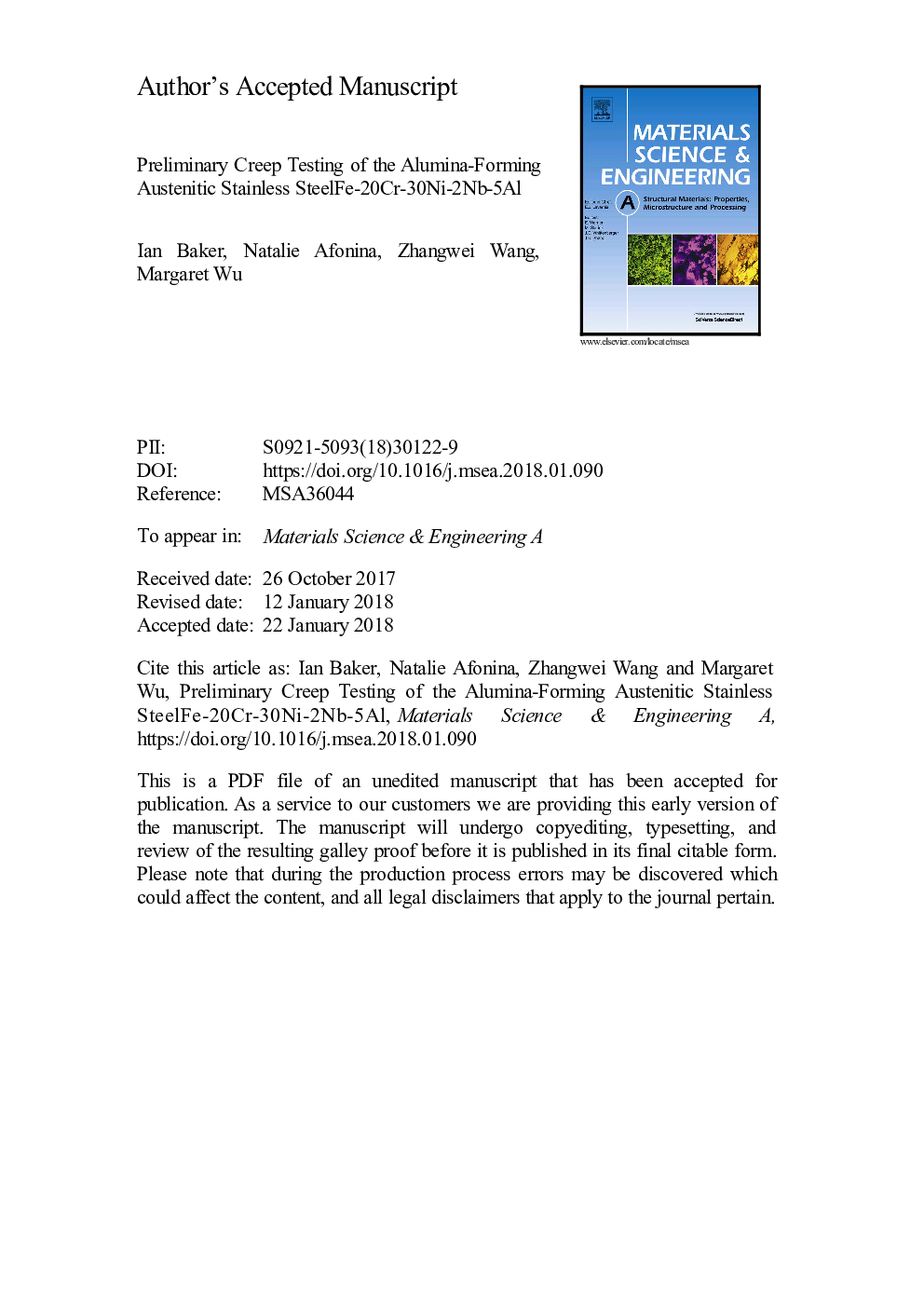| Article ID | Journal | Published Year | Pages | File Type |
|---|---|---|---|---|
| 7973311 | Materials Science and Engineering: A | 2018 | 26 Pages |
Abstract
The alumina-forming austenitic stainless steel Fe-20Cr-30Ni-2â¯Nb-5Al was given a solutionizing anneal at 1250â¯Â°C followed by anneals at 800â¯Â°C for 0, 2.4, 24, 240â¯h to produce B2 (ordered b.c.c.) and Laves phase precipitates of different sizes with different extents of grain boundary coverage. Both tensile tests and constant-stress (43â¯MPa) creep tests were performed on the heat-treated materials and on the as-cast alloy at 760â¯Â°C. The precipitates grew during the creep testing. In addition, L12 (ordered f.c.c.) precipitates nucleated and grew during the creep testing to similar particle sizes after 500â¯h independent of the prior heat treatment at 800â¯Â°C. The specimens given the shortest heat treatment of 2.4â¯h, which had the smallest initial particle sizes, showed both the highest yield strength and the smallest creep strain after 500â¯h. The extent of grain boundary coverage by precipitates did not appear to affect the creep rates. No grain boundary cracking or precipitate cracking was found in the heat-treated specimens after creep testing, but the as-cast material failed around 600â¯h.
Related Topics
Physical Sciences and Engineering
Materials Science
Materials Science (General)
Authors
Ian Baker, Natalie Afonina, Zhangwei Wang, Margaret Wu,
